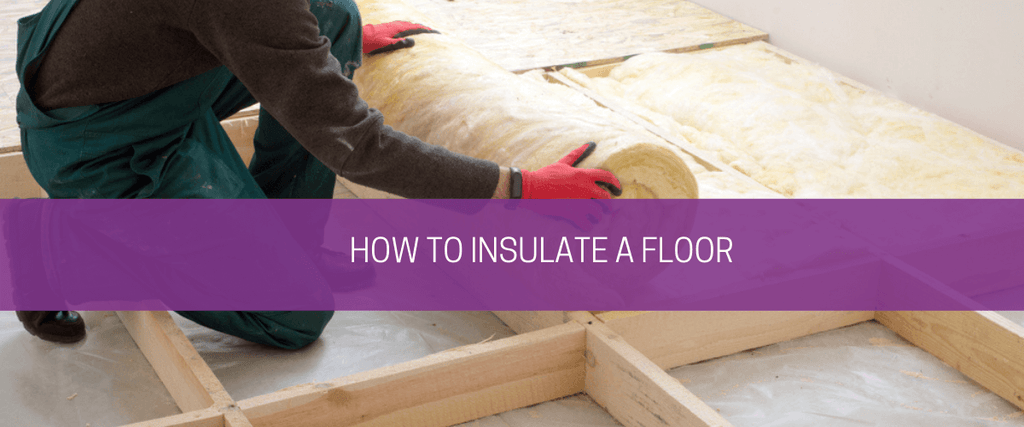How to insulate a floor

Did you know, approximately 10% of heat loss from an average home is through the floor?
The winter months are fast approaching – and if you’re looking for a simple and effective way to keep your property warm and reduce energy bills, insulating the floor could be the ideal solution. In fact, it could save your household up to £70 per year!
Sometimes, the help of a professional insulator may be required, particularly in very old properties. But in most cases – whether the subfloor is made from suspended timber or solid concrete – you should be able to improve insulation yourself. Here we take a closer look at how.
3 steps to improve floor insulation in your home
Step 1: Add underfloor insulation
First things first, it’s worth adding some extra underfloor insulation– and the best way to do that will depend on the type of subfloor you have.
Suspended timber – if it’s made from timber, place solid insulation boards or mineral wool between the joists (inside the cavity) and secure it in place with netting. You may need to take up the floorboards to do this. If the floor is above an unheated basement or cellar, plasterboard should also be fixed to the ceiling to provide fire resistance.
Solid concrete – for this you will need to use rigid insulation foam. This can either be laid below the concrete (if fresh concrete is being laid) or above the concrete and covered with chipboard.
For both of these subfloor types, any work completed will need to comply with the relevant Building Regulations – including minimum room heights, minimum U-values (i.e. a measure of how quickly heat travels through the floor) and fire safety. Before you start, you should also check the floor for any signs of damp, rot or infestation. And make sure the new insulation doesn’t block ventilation openings.
Step 2: Install a good-quality underlay
Underlay is (by far!) one of the easiest ways to insulate a floor. Sandwiched between the subfloor and floor covering, it creates an extra layer and helps to keep in the heat. Some are even specifically designed to provide superior thermal insulation and their addition can help to reduce energy costs by up to 15%.
The correct underlay for your project will depend on the type of floor covering you have or wish to install. But ultimately, the higher the TOG rating, the better.
Our current recommendations, here at Carpet Underlay Shop, include:

Plushwalk 12mm – perfect for use with carpet. This is a ‘gold standard’ underlay, cut from thick bounce-back memory foam and boasting an impressive TOG rating of 3.5. Available for just £5.99 per m2, it’s an affordable yet luxurious choice that will make a big difference to your floor insulation.

Royale® 7mm Professional Sonic Gold – this is deemed the best underlay for laminate and wooden flooring currently on the market. Thanks to its unique foam formula and thick foil backing, it has a superior TOG rating and offers advanced thermal insulation. Yet, it’s still available for the fantastic price of £

Royale LVT Acoustic – designed specifically for use with luxury vinyl tiles (LVT). This underlay is made from a combination of toughened foam and silver foam, and it boasts a range of useful features – including excellent heat insulation. Priced at just £3.60 per m2, it’s a worthwhile investment for anyone looking to improve their subfloor insulation.
Step 3: Reduce the likelihood of draughts
Last but not least – once the underlay and floor covering have been fitted, the final step is to draught-proof. Silicone sealant should be used to fill the gaps between the floorboard, as well as between your flooring and the wall. This is available for a low price and is very easy to apply.
What’s more, it’s also a good idea to add metal strips to each threshold. Not only will this create a seamless transition from one room to the next, it will reduce the likelihood of a draught and improve the overall insulation of your flooring.

Want further information?
Our team of in-house experts are always on hand and happy to assist.
If you have any questions about the underlays available in our store, or would like additional advice on how to insulate a floor, please don’t hesitate to get in touch. You’re welcome to call us at any time on 0203 887 0994. Or if you prefer, send an email to sales@carpet-underlay-shop.co.uk and we’ll respond to your enquiry as soon as possible.
- Alex Illidge






